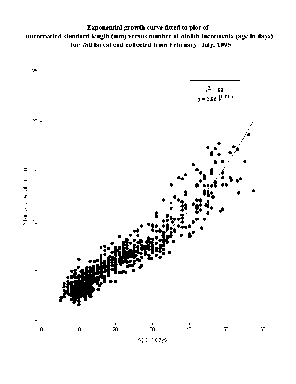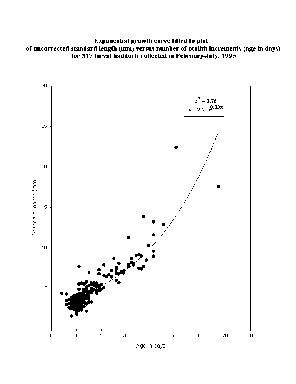Age and growth of larval cod and haddock from the '95
and '96 broad-scale program
J. Green, S. Brownell, R. Jones and A. Chute
Typically, relative age structure of larval fish
populations is inferred from the change in length over time. Daily
growth ring deposition in larval fish otoliths provides a means of
obtaining an independent source of age information. This along with
length data can be used to develop age-length relationships and
estimate growth in the field. Daily growth increment analysis has
been completed for larval cod and haddock from the 1995 and ’96
broad-scale cruises. The number of concentric rings counted under a
compound microscope at 1000x in the two most visible otoliths, the
sagittae and lappilli of cod and haddock were used to age larvae in
days from hatching. Age and standard length of preserved fish were
used to generate age-length relationships for both species as shown
below. The estimated growth rate for cod was approximately 3.1% per
day for both years and similar for haddock in 1995. The numbers of
haddock available for otolith increment analysis from 1996 was low
and the size range was limited, essentially 2-6 mm, which provides a
poor representation of growth. On the other hand, cod larvae, which
were reasonably abundant in ’96, were aged over a wide range of
sizes and included some fish that were substantially larger at age
than found in ’95.




